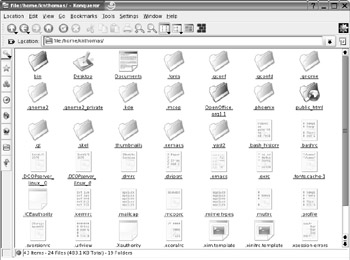What Data Should You Back Up?
Data on your system can be classified into three broad types: program data, configuration data, and personal data. It's traditionally reasoned that backing up all types of data is inefficient and difficult, largely because it would mean backing up practically the entire hard disk. Because of this, you usually want to back up the latter two types of data: configuration and personal. The theory is that if your PC is hit by a hard-disk-wrecking disaster, you can easily reinstall the operating system from the CD/DVD. Restoring your system from backup is then simply a matter of ensuring the configuration files are back in place, so your applications work as you would like them to, and ensuring your personal data is once again made accessible.
Practically all the personal configuration data for programs you use everyday, as well as your personal data, is stored in your /home/ folder (although the configuration files for software used systemwide are stored in the /etc/ folder). If you take a look in your /home/ directory, you might think that previous sentence is incorrect. On a freshly installed system, the directory appears largely empty. However, most, if not all, of the configuration files are hidden; their directory and filenames are preceded with a period (.), which means that Linux doesn't display them during a standard directory listing.
To view hidden files and folders in Konqueror, select View ® Show Hidden Files. This can be quite an eye-opener when you see the masses of data you didn't even realize were there, as shown in the example in Figure 32-1. To view hidden files at the shell prompt, simply use the -a command option with the ls command:
ls -a

Figure 32-1. Most of the configuration files for programs are hidden—literally—in your /home/ folder.
The configuration files held in your /home/ folder relate solely to your user account. Any other users will have their own configuration files, entirely independent of yours. In this way, all users can have their own configuration settings for various applications, which can be backed up independently.
Under SUSE Linux, you can back up configuration data using the YaST2 System Backup tool and back up personal data using Konserve. Keep in mind that there's little point in making backups using either Konserve or the YaST2 System Backup tool if you leave the resultant archive files on your hard disk. For full backup protection, the archives should be stored elsewhere, such as on an external hard disk or CD/DVD-ROM. Consider using a program like K3b for burning backup discs.
EAN: 2147483647
Pages: 293